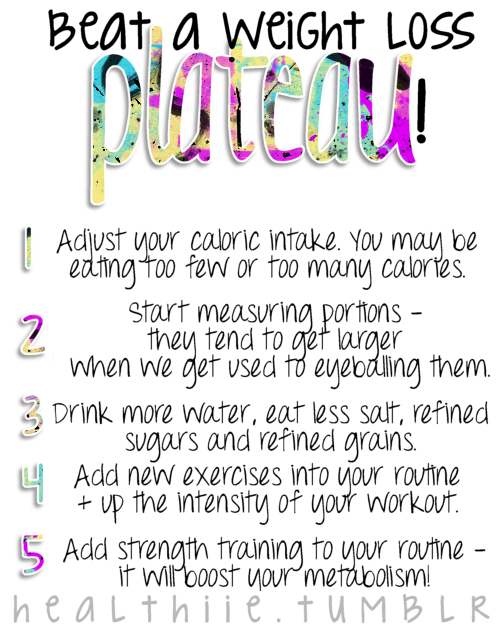
You may wonder how to lose weight after losing it. We'll be sharing some of our best tips to help you do just that. These strategies include cutting calories and increasing your fiber intake. By following these tips, you'll be well on your way to weight loss success. You should also keep a food diary to track your progress.
Reduce calorie intake
One of the best ways to lose weight is to reduce the amount of calories that you consume each day. Check the labels on all the food you consume to decrease your calorie intake. Also, consider how much food you eat, and substitute items with low-calorie versions. Some substitutions are easy, such as fat free milk, which has 60 fewer calories per cup than regular milk. Fresh fruit and popcorn can be substituted for chips to reduce portion sizes.

Get more fiber
American average does not consume enough fiber. The basic recommendation of 25g fiber per day is a great starting point. However, many people don't get enough fiber. American women only consume 15g of fiber each day, which is far less than what experts recommend. Experts suggest women consume between 30 and 40 grams of fiber daily. It is easy to increase your fiber intake and there are many delicious fiber-rich foods.
Get more water
Did you know that drinking more water has a direct impact on your weight loss? A 2013 review of 11 studies revealed that those who increased their water intake and followed a weight loss plan also lost more weight. Several other studies have shown similar results. Visit the website to learn more about how hydration can help you stay hydrated. It is important to drink water instead of high-calorie drinks if you want to lose weight. Water can keep you full for longer and improve your energy levels, enabling you to exercise more often.
Log your meals
You may have read that people who log their food are more likely to lose weight. Although it may seem contradictory, this is an important aspect of food tracking. By writing down every food item you consume, you will be able to determine exactly how many calories you're consuming. This will help you avoid mindless eating, which is the most common culprit of hidden calories. Logging your food can help you establish a healthy routine.

Be aware of your weight
Monitor Your Weight is an app you might have used to lose weight. These apps allow you to log the amount of food you eat and the amount of weight you've lost or gained. They can be used to monitor your progress in a diet. Weight Watchers is one such app, and it shows you graphs that help you keep track of your progress. You can also import data directly from websites or apps into your profile.
FAQ
What is the best type of exercise for busy people to do?
The best way to stay fit is by doing exercises at home. You do not need to join a gym. You can perform simple exercises at your home without needing expensive equipment.
All you need is a pair dumbbells, mat, chair, and a timer.
Your most important goal is to keep up your fitness routine. If you are absent for a few weeks, you could lose your motivation.
A great way to start off would be to try lifting weights three times per week. This could include squats, lunges, push-ups, pull-ups, dips, curls, etc.
Once you've mastered the basics, you can start to move on to other types of exercise such as running or jumping rope, skiing, yoga, Pilates and dancing.
You should choose an exercise program that suits your life. You might avoid exercising if your work hours are long.
If you're a night owl then it is better to exercise in the evening than in the morning.
Remember to listen to your body and stop when you feel tired.
What Amount Of Exercise Is Needed For Weight Loss?
The amount of exercise needed for weight loss depends on several factors, including age, gender, body type, and how much you weigh. Most people require moderate activity at least five days per week.
The American College of Sports Medicine recommends 150 minutes of moderate-intensity aerobic activity each week, spread over three days.
For example, if your goal is to lose 10lbs, aim for 300 minutes of moderately intense exercise per week. You can do this by walking fast, swimming laps or biking, as well as playing tennis, golfing and hiking, or jogging, running or other similar activities.
For those just starting out, you might consider 20 minutes of vigorous activity every other week. You could do sprints, lifting weights or jumping rope.
Aerobic exercise is a great way to burn calories and build muscle mass. Muscle burns more calories than fat does. So building muscle while losing weight may help you achieve your goal faster.
What is the difference between intermittent fasting or calorie restriction?
Calorie restriction refers to eating less than what your body requires. Intermittentfasting is different as it doesn’t require you to restrict your calories. Intermittent fasting focuses more on eating fewer calories every day.
Intermittent fasting can be more effective as it allows you to eat the foods you love and not feel guilty.
However, both methods have their pros and cons. Therefore, you need to decide whether you prefer one method over another.
Statistics
- One 6-month study showed that simply doing 11 minutes of strength-based exercises 3 times per week resulted in a 7.4% increase in metabolic rate, on average. (healthline.com)
- According to Harvard Health, it's estimated that a 155-pound (70-kg) person burns around 167 calories per 30 minutes of walking at a moderate pace of 4 mph (6.4 km/h) (5). (healthline.com)
- It's estimated that half of all American adults attempt to lose weight every year (1Trusted (healthline.com)
- A 12-week study in 20 women with obesity found that walking for 50–70 minutes 3 times per week reduced body fat and waist circumference by an average of 1.5% and 1.1 inches (2.8 cm), respectively (healthline.com)
External Links
How To
How to Intermittent Fasting
Intermittent fasting refers to a diet where you only eat one day per semaine, typically Monday through Friday. This diet aims to lower your overall calorie intake, while still ensuring you get enough nutrition. This will allow you to burn fat more quickly than eating regular meals throughout the week.
The most common form IF is to reduce calories on specific days. This means that you might skip breakfast every day and then indulge in whatever food you desire throughout the day. It is possible to choose to have three smaller meals each day, rather than two large.
There are many types of intermittent fasting. There are pros as well as cons to each form of intermittent fasting. Alternate Day Fasting is the easiest to begin because you don’t have to make significant changes in your life. Some people may find it difficult to adhere to such a strict schedule, so they might try other methods.
If you're looking to start an intermittent fasting routine, I recommend starting with alternate-day fasting. This will allow for gradual transition to more extreme fasting without having to change your lifestyle.